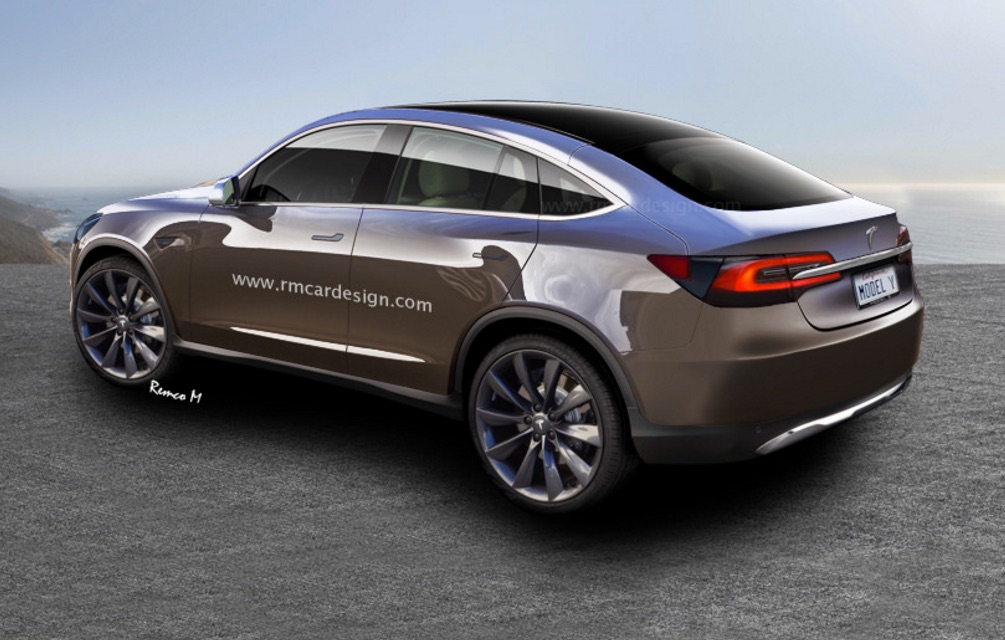News
What Tesla has in store for 2017: Model 3, Model Y, Solar Roof and more
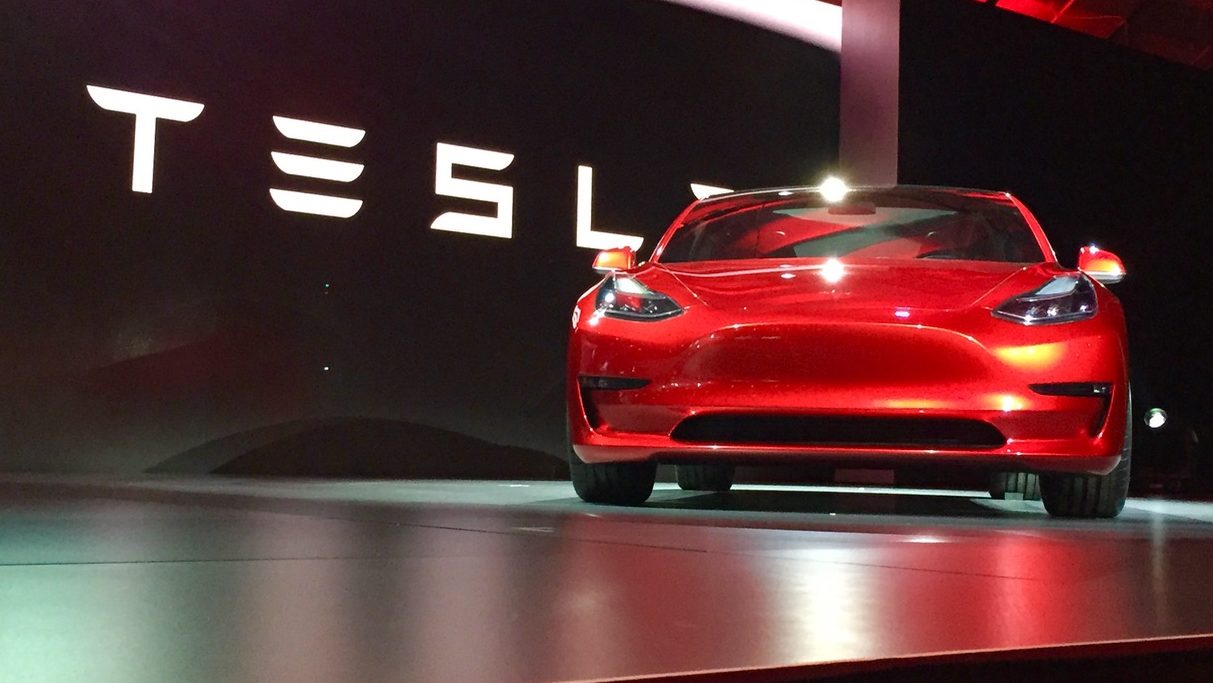
Tesla CEO Elon Musk revealed his vision of the future through the company’s Master Plan Part Deux on July 20, 2016. Filled with predictions about his complex and detailed plan to marry self-driving electric vehicles covering all segments, with solar rooftops and integrated battery storage units, 2017 should be the year when many of them begin to come into focus in a way the public can visualize.
Tesla Model 3 Deliveries
Arguably the most anticipated product on Tesla’s roadmap is its affordable mass market Model 3 mid-size sedan which will see first deliveries take place at the end of 2017. The car has been in “pencils down mode” since summer, meaning the final design has been locked in and the process of getting it ready for production has begun. Elon has hinted that plans call for a volume production date that would begin sometime near the summer of 2017.
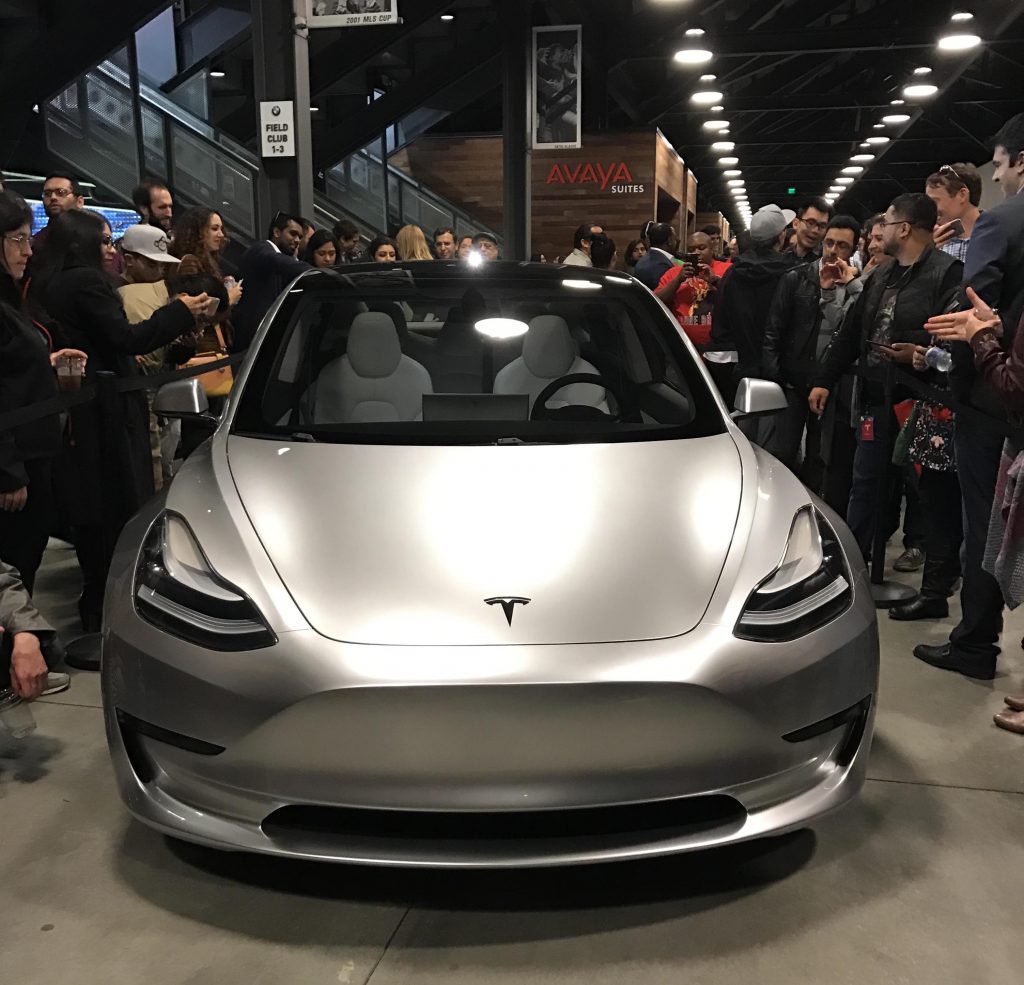
Silver Model 3 seen at Tesla’s employee-only Q3 celebration party in San Jose, CA
Goals should always exceed one’s grasp and Musk recognizes that starting volume production on Model 3 by the end of July is going to be next to impossible. He was chastened a bit by the roll out of the Model X, which began in September, 2015. A number of production glitches delayed full production of that car until well into the second quarter of 2016.
That experience tempered Elon’s irrepressible optimism with a dose of real world experience. Even assuming production did begin next summer, it would result in relatively few cars being produced. Those would get into the hands of customers living near the factory in Fremont, California so that any post-production issues can be addressed quickly and efficiently. The lessons learned would then be used to improve the quality of the cars to come.
Machines That Builds Machines, Come to Life
A main area of focus for Musk and Tesla’s production arm is devising ways to reap significant benefits from a total rethinking of the manufacturing process by “building the machine that builds the machine”. Having recently acquired a leading engineering firm in Germany focused on building advanced automation tools, Tesla believes that a properly designed factory could operate at 5 to 10 times the speed of today’s production facilities.
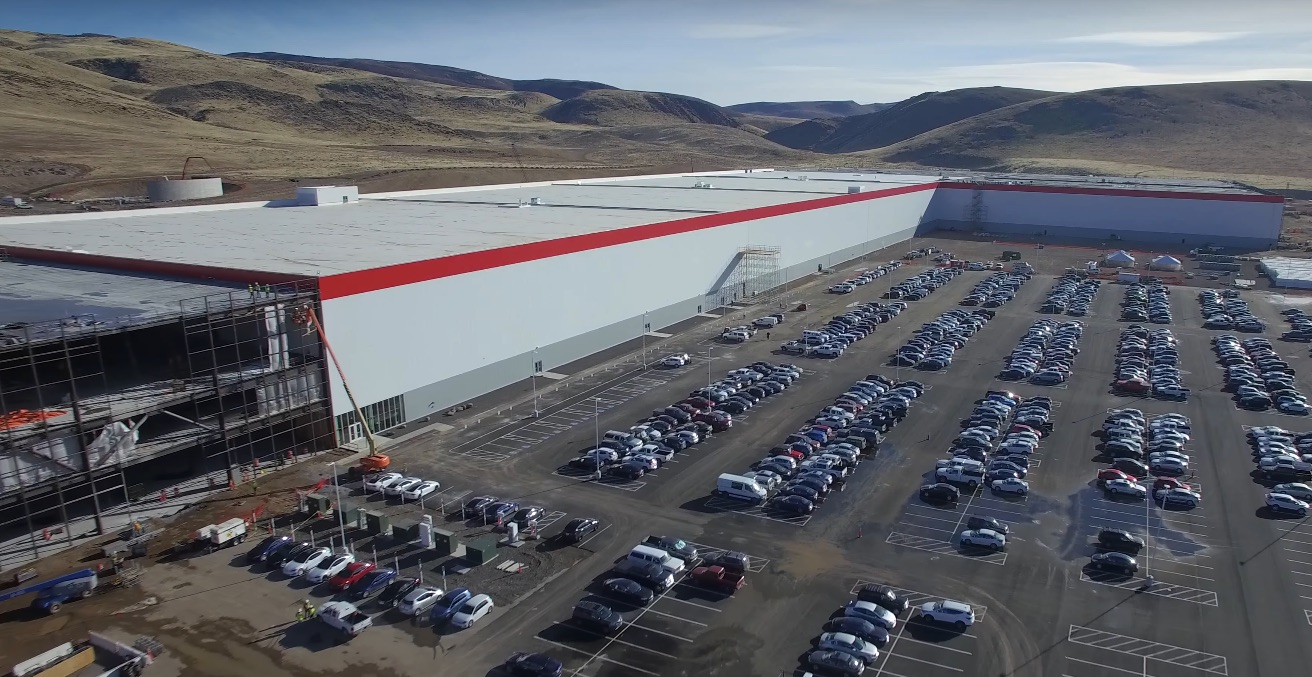
Drone video of Tesla’s Gigafactory shows the battery factory more than doubling in size
“Tesla engineering has transitioned to focus heavily on designing the machine that makes the machine — turning the factory itself into a product. A first principles physics analysis of automotive production suggests that somewhere between a 5 to 10 fold improvement is achievable by version 3 on a roughly 2 year iteration cycle.”, said Musk at the Tesla Gigafactory Grand Opening celebration.
Plans to nearly double the size of Tesla’s Fremont, Calif. factory were recently approved by the city. Tesla plans to build as many as 500,000 cars a year, most of them Model 3s, by the end of 2018.
Tesla Model Y Compact SUV and Tesla Pickup Truck Unveiling
An electric compact SUV based on the Model 3 chassis, dubbed Model Y, will round out Tesla’s S-E-X-Y range of vehicles. That, along with a Tesla pickup and a Tesla ‘minibus’, will fulfill the major automotive segments the Silicon Valley automaker and energy company aims to cover with its upcoming fleet of electric cars. Expect prototypes to be unveiled sometime in 2017
“In addition to consumer vehicles, there are two other types of electric vehicle needed: heavy-duty trucks and high passenger-density urban transport. Both are in the early stages of development at Tesla and should be ready for unveiling next year.”, reads Tesla’s blog post.
Musk also says Tesla is already working on a semi-truck for hauling. Heavy trucks account for about 50% of the emissions from transportation. With Musk’s focus on creating a sustainable society, trucks will need to be big part of the picture. Both the pickup truck and the Tesla Semi are expected to be revealed in concept form during the coming year.Model Y (compact SUV) off Model 3 chassis. Tesla Bus/Minibus/Spacebus off Model X.
— Elon Musk (@elonmusk) July 31, 2016
In addition, Tesla is thinking about creating a self driving minibus that could transport up to 10 passengers, according to Musk’s Master Plan Part Deux. It would be based on the Model X chassis. Passengers could summon the bus to their location and it would deliver them to their destination with little or no walking required — something traditional public transportation vehicles cannot do.
Tesla job openings reveal that developments for future vehicles are already being planned for.
Roll Out of Autopilot 2.0 and Self-Driving Features
2017 is also the year when Tesla’s Enhanced Autopilot should become fully operational. All cars produced after October 19 are equipped with the hardware 2 package of cameras, radar, and advanced ultrasound sensors that will allow them to operate without human input. All that remains to be done is accumulate enough human logged driving miles to flush out the confidence level for the company’s self-driving algorithms.
Tesla has already accumulated more than 1.2 billion miles of driving history and is adding 3 million more miles every day. Elon believes it will require a total of 6 billion miles of driving experience before autonomous driving is reliable enough to convince regulators to allow self-driving cars to be allowed on public roads. He is also aware that approval will vary widely from jurisdiction to jurisdiction, both within the United States and in other countries.
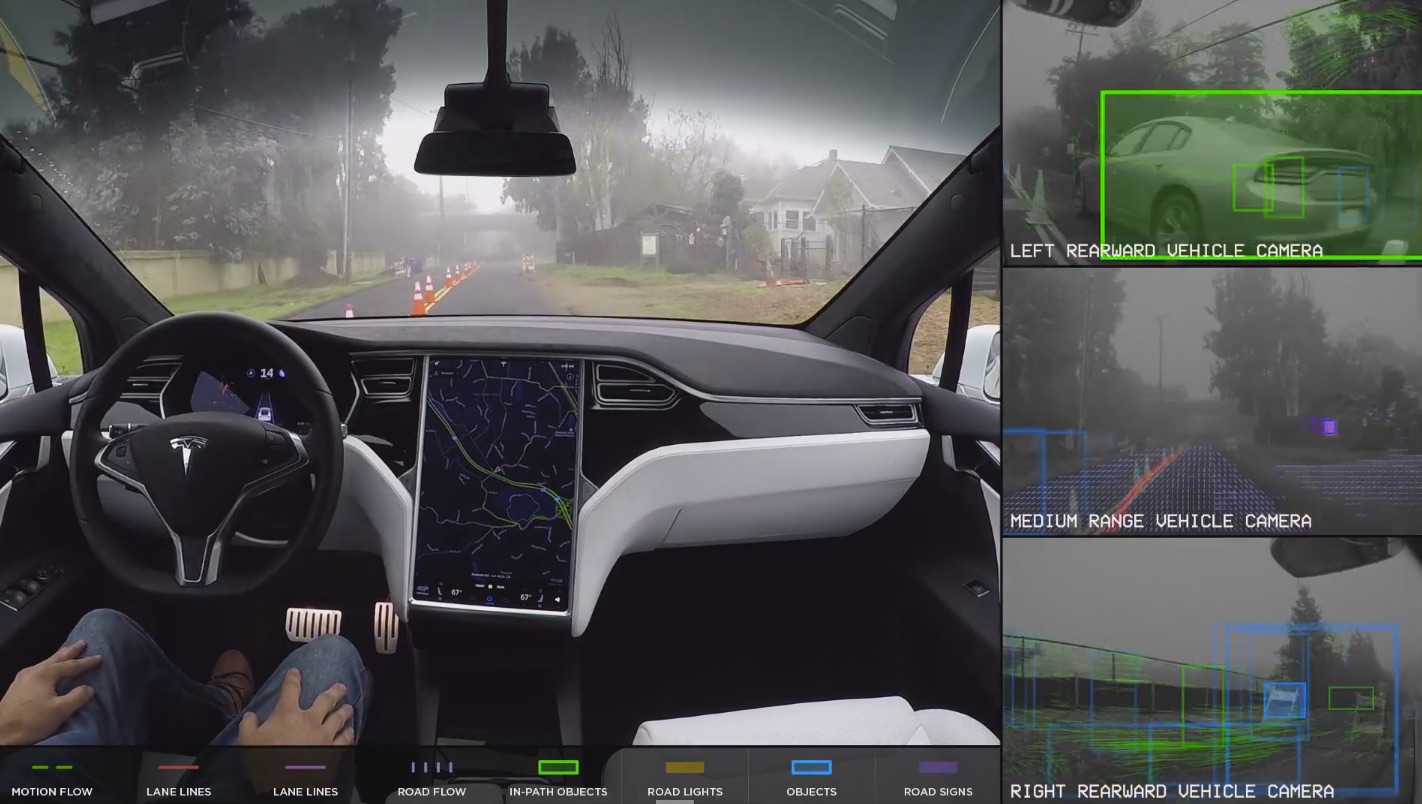
Tesla demonstrates the capabilities of a Full Self-Driving Model X
Musk plans to showcase a fully autonomous trip from Los Angeles to New York by the end of 2017. According to Musk, the cross country journey in a Full Self-Driving Tesla would take place “without the need for a single touch” from a human driver, including recharging the car’s battery.
“Our goal is, we’ll to be able to do a demonstration drive of full autonomy all the way from LA to New York,” According to Musk, the trip would be “from home in LA, to dropping you off in Times Square, and then the car will go park itself.”
Tesla Will Begin Solar Roof Sales
Now that SolarCity has officially become part of Tesla Motors, the Solar Roof products introduced in October will become available next year to customers throughout the US. Tesla is revamping its retail stores to include information about its solar products and the Powerwall 2, its latest residential energy storage product. Musk envisions a seamless, pain-free process that will allow solar customers to order a Solar Roof and all the details are handled completely by Tesla.
Combining energy production with local energy storage will permit more homeowners to reduce their reliance on the local utility company, which will insulate them against future rate hikes. It will also mean fewer carbon emissions from generating electricity, reinforcing Musk’s goal of a sustainable future.
The Solar Roof will be offered in four styles and the anticipated to go on sale during the summer of 2017, starting with the most popular style first. Other styles will become available at the rate of one additional style every three months.

Elon Musk
Elon Musk’s X will start using a Tesla-like software update strategy
The initiative seems designed to accelerate updates to the social media platform, while maintaining maximum transparency.

Elon Musk’s social media platform X will adopt a Tesla-esque approach to software updates for its algorithm.
The initiative seems designed to accelerate updates to the social media platform, while maintaining maximum transparency.
X’s updates to its updates
As per Musk in a post on X, the social media company will be making a new algorithm to determine what organic and advertising posts are recommended to users. These updates would then be repeated every four weeks.
“We will make the new 𝕏 algorithm, including all code used to determine what organic and advertising posts are recommended to users, open source in 7 days. This will be repeated every 4 weeks, with comprehensive developer notes, to help you understand what changed,” Musk wrote in his post.
The initiative somewhat mirrors Tesla’s over-the-air update model, where vehicle software is regularly refined and pushed to users with detailed release notes. This should allow users to better understand the details of X’s every update and foster a healthy feedback loop for the social media platform.
xAI and X
X, formerly Twitter, has been acquired by Elon Musk’s artificial intelligence startup, xAI last year. Since then, xAI has seen a rapid rise in valuation. Following the company’s the company’s upsized $20 billion Series E funding round, estimates now suggest that xAI is worth tens about $230 to $235 billion. That’s several times larger than Tesla when Elon Musk received his controversial 2018 CEO Performance Award.
As per xAI, the Series E funding round attracted a diverse group of investors, including Valor Equity Partners, Stepstone Group, Fidelity Management & Research Company, Qatar Investment Authority, MGX, and Baron Capital Group, among others. Strategic partners NVIDIA and Cisco Investments also continued support for building the world’s largest GPU clusters.
News
Tesla FSD Supervised wins MotorTrend’s Best Driver Assistance Award
The decision marks a notable reversal for the publication from prior years, with judges citing major real-world improvements that pushed Tesla’s latest FSD software ahead of every competing ADAS system.

Tesla’s Full Self-Driving (Supervised) system has been named the best driver-assistance technology on the market, earning top honors at the 2026 MotorTrend Best Tech Awards.
The decision marks a notable reversal for the publication from prior years, with judges citing major real-world improvements that pushed Tesla’s latest FSD software ahead of every competing ADAS system. And it wasn’t even close.
MotorTrend reverses course
MotorTrend awarded Tesla FSD (Supervised) its 2026 Best Tech Driver Assistance title after extensive testing of the latest v14 software. The publication acknowledged that it had previously criticized earlier versions of FSD for erratic behavior and near-miss incidents, ultimately favoring rivals such as GM’s Super Cruise in earlier evaluations.
According to MotorTrend, the newest iteration of FSD resolved many of those shortcomings. Testers said v14 showed far smoother behavior in complex urban scenarios, including unprotected left turns, traffic circles, emergency vehicles, and dense city streets. While the system still requires constant driver supervision, judges concluded that no other advanced driver-assistance system currently matches its breadth of capability.
Unlike rival systems that rely on combinations of cameras, radar, lidar, and mapped highways, Tesla’s FSD operates using a camera-only approach and is capable of driving on city streets, rural roads, and freeways. MotorTrend stated that pure utility, the ability to handle nearly all road types, ultimately separated FSD from competitors like Ford BlueCruise, GM Super Cruise, and BMW’s Highway Assistant.
High cost and high capability
MotorTrend also addressed FSD’s pricing, which remains significantly higher than rival systems. Tesla currently charges $8,000 for a one-time purchase or $99 per month for a subscription, compared with far lower upfront and subscription costs from other automakers. The publication noted that the premium is justified given FSD’s unmatched scope and continuous software evolution.
Safety remained a central focus of the evaluation. While testers reported collision-free operation over thousands of miles, they noted ongoing concerns around FSD’s configurable driving modes, including options that allow aggressive driving and speeds beyond posted limits. MotorTrend emphasized that, like all Level 2 systems, FSD still depends on a fully attentive human driver at all times.
Despite those caveats, the publication concluded that Tesla’s rapid software progress fundamentally reshaped the competitive landscape. For drivers seeking the most capable hands-on driver-assistance system available today, MotorTrend concluded Tesla FSD (Supervised) now stands alone at the top.
News
Elon Musk’s Grokipedia surges to 5.6M articles, almost 79% of English Wikipedia
The explosive growth marks a major milestone for the AI-powered online encyclopedia, which was launched by Elon Musk’s xAI just months ago.

Elon Musk’s Grokipedia has grown to an impressive 5,615,201 articles as of today, closing in on 79% of the English Wikipedia’s current total of 7,119,376 articles.
The explosive growth marks a major milestone for the AI-powered online encyclopedia, which was launched by Elon Musk’s xAI just months ago. Needless to say, it would only be a matter of time before Grokipedia exceeds English Wikipedia in sheer volume.
Grokipedia’s rapid growth
xAI’s vision for Grokipedia emphasizes neutrality, while Grok’s reasoning capabilities allow for fast drafting and fact-checking. When Elon Musk announced the initiative in late September 2025, he noted that Grokipedia would be an improvement to Wikipedia because it would be designed to avoid bias.
At the time, Musk noted that Grokipedia “is a necessary step towards the xAI goal of understanding the Universe.”
Grokipedia was launched in late October, and while xAI was careful to list it only as Version 0.1 at the time, the online encyclopedia immediately earned praise. Wikipedia co-founder Larry Sanger highlighted the project’s innovative approach, noting how it leverages AI to fill knowledge gaps and enable rapid updates. Netizens also observed how Grokipedia tends to present articles in a more objective manner compared to Wikipedia, which is edited by humans.
Elon Musk’s ambitious plans
With 5,615,201 total articles, Grokipedia has now grown to almost 79% of English Wikipedia’s article base. This is incredibly quick, though Grokipedia remains text-only for now. xAI, for its part, has now updated the online encyclopedia’s iteration to v0.2.
Elon Musk has shared bold ideas for Grokipedia, including sending a record of the entire knowledge base to space as part of xAI’s mission to preserve and expand human understanding. At some point, Musk stated that Grokipedia will be renamed to Encyclopedia Galactica, and it will be sent to the cosmos.
“When Grokipedia is good enough (long way to go), we will change the name to Encyclopedia Galactica. It will be an open source distillation of all knowledge, including audio, images and video. Join xAI to help build the sci-fi version of the Library of Alexandria!” Musk wrote, adding in a later post that “Copies will be etched in stone and sent to the Moon, Mars and beyond. This time, it will not be lost.”
